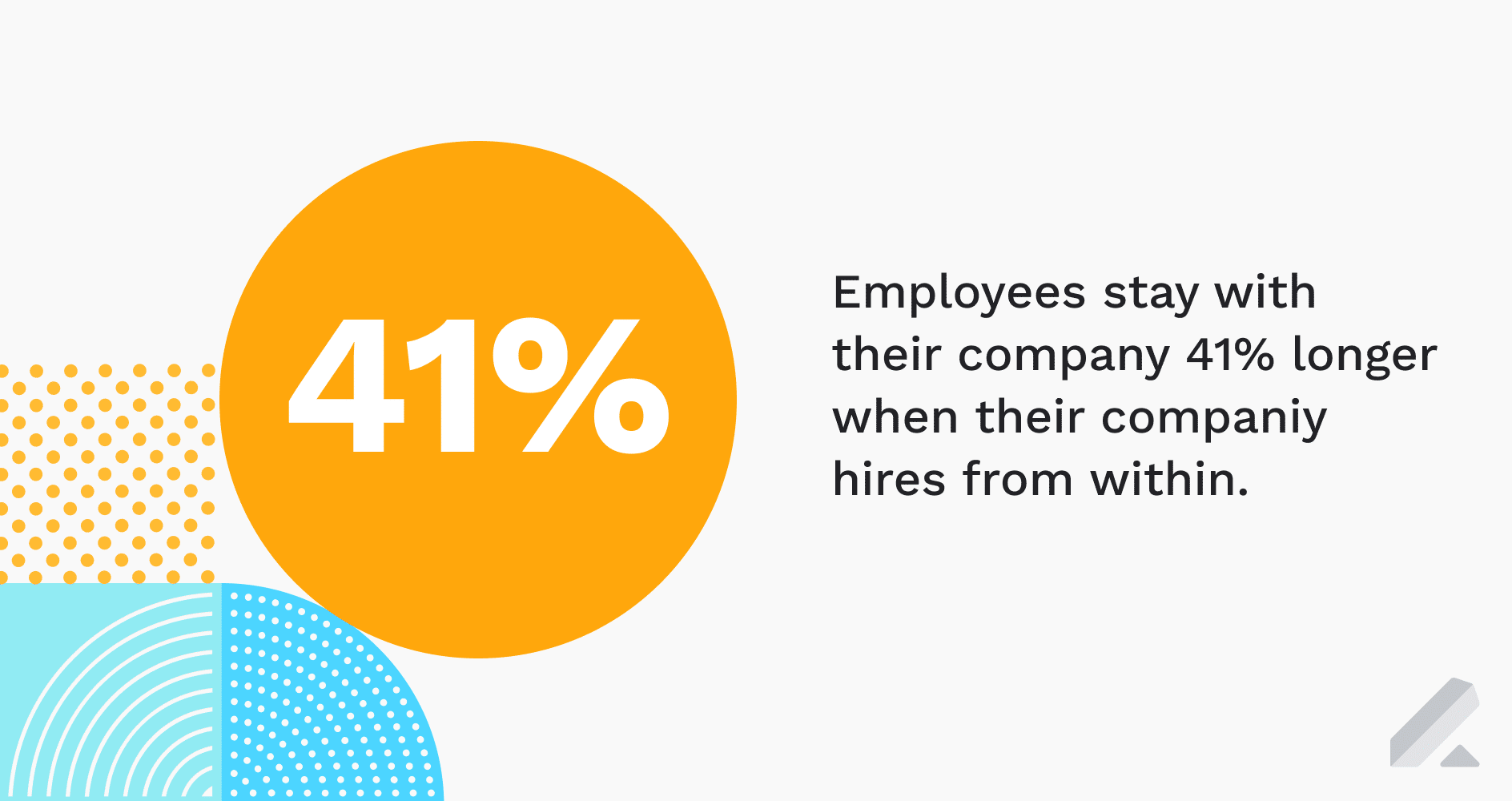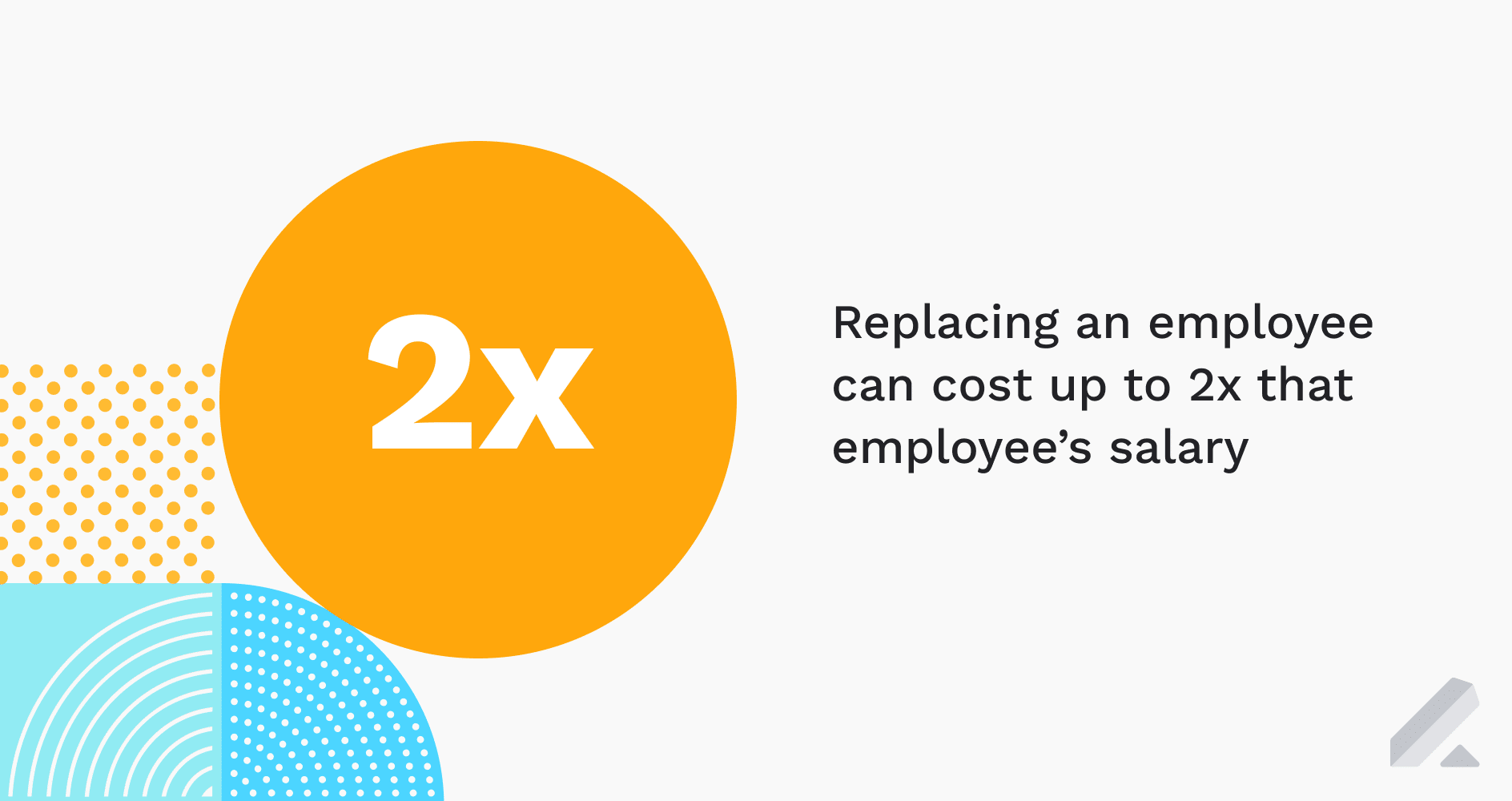Internal mobility is advantageous for both your company and your employees—and internal mobility can drastically reduce recruiting costs, to boot.
But, what are the long-term benefits of internal mobility for your business?
Well, as it turns out, there are several. We’re going to spotlight the top pros of the hiring approach for your organization and look at how career agility can help.

Retention
Making it a part of your recruitment and retention plan to nurture and develop employees benefits your business and their growth. And that growth is of the utmost importance to your people — especially for younger talent.
Consider, for example, that 41% of millennials stress about their career prospects in their current organizations, and so do 50% of Gen Z employees.
Meanwhile, PwC has predicted that, by 2030, only 9% of the US workforce will hold permanent, full-time positions as the world of work changes.
So, what incentive is there for people to stay instead of jumping ship?
By nurturing your employees and providing opportunities for both vertical and lateral growth, you not only keep talent on your side but also make your organization a more attractive place to work — and stay.
Collaboration
Having an agile environment where employees can try new roles, take on different projects, develop and test new skills, and shift both vertically and laterally breeds cross-collaboration.
More than that, it allows your team to fill skill gaps that you may otherwise hire externally for, and spend significant time and money doing so.
But that’s not the only upside to fostering collaboration through internal mobility. LinkedIn found employees stay at their company 41% longer when their orgs hire from within.
Engagement
Keeping employees interested and invested in both their work and your organization is tough stuff — especially when it comes to career development.
However, as an employer, there’s a cost to poor employee engagement. Per Gallup:
- The cost of an actively disengaged employee is up to 18% of their annual salary
- Disengagement can cost companies millions (up to $60 million a year)
- Replacing an employee can cost up to 2x that employee’s salary
Engaged employees aren’t just well-paid ones; they’re also the team members who are being supported in their development and growth.
To keep people invested in your company, you need to be willing to invest in them.

Career agility and its impact on internal mobility
Like internal mobility, career agility is also growing in popularity among organizations that recognize the value of nurturing existing talent.
And, in a world where career paths are no longer linear, career agility is a must.
What does career agility mean?
In a nutshell, career agility refers to one’s ability to keep pace with the demands of the modern business landscape.
Employees who are agile in both mindset and skills are considered to have a greater ability in adapting to new roles, changing work environments, and business demands.
At its core, career agility is meant to help optimize a person’s creativity while encouraging them to pursue new skills, growth, and overall career satisfaction.
How do career agility and internal mobility work together?
Gloat is a great example of an organization harnessing career agility.
Empowering employees to advance their skills and knowledge prepares them for changes while the company benefits from a diverse workforce.
Internal mobility supports career agility by moving employees onto new roles, projects, tasks, and even coaching opportunities so they can grow more agile as people and team members.
“Simply giving employees career path options based on what worked in the past isn’t enough anymore. To support careers that are as agile as the working world we’re living in, employees need to be in the driver’s seat, to chart any potential career path aligned to their skills and aspirations, understand their skills gaps, and be presented with real opportunities to grow towards their next roles. Career plans need to be dynamic and actionable.”
Brian Hershey, Gloat
Giving employees exposure to more areas, departments, and opportunities within their organization inevitably breeds agility and preparedness for any changes they may experience in their careers. In this way, career agility is a direct result of internal mobility.

Benefits of adding career agility to your internal mobility strategy
Employees who are agile, adaptable, and versatile are becoming more coveted by organizations — and more competitive among candidates — while setting themselves up for long-term career success.
This agile concept is known as “career agility” and it is becoming more relevant than ever to hiring teams responsible for recruiting candidates that are ripe for internal mobility.
As an employer, you can benefit from these attributes while helping your talent.
While the benefits are numerous, here are some of the top benefits we believe both organizations and employees can reap from incorporating career agility into an internal mobility strategy:
- Day-to-day growth in a current role, versus changing jobs or companies to find new growth opportunities
- Shift from what an employee ‘should do’ in a role to what they ‘can’ or ‘want’ to do
- More hands-on involvement from the employee in their career development and work
- Greater flexibility in the nature or type of work an employee does, and the work they’re exposed to
- Find new ways to develop unique or niche skills while building on existing skillsets
These benefits may seem like common workplace benefits of any team, but when practiced regularly by both employees and managers, the outcome can be a game-changer for organizations looking to leverage internal talent.
Start leveraging your business’s best asset: your people
In a world where the competition for talent is fierce, leveraging the star employees you already have, and focusing on the future potential of candidates, can help both your recruiting team and organization at large adapt to the demands and realities of hiring today.
Our complete guide to internal mobility empowers recruiters with everything they need to know to drive internal mobility. Get your free copy of our guide below.



